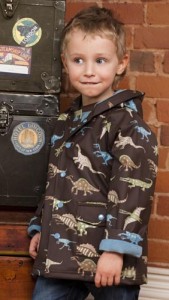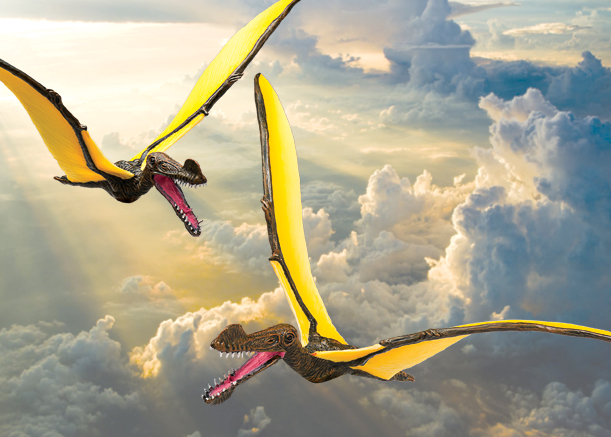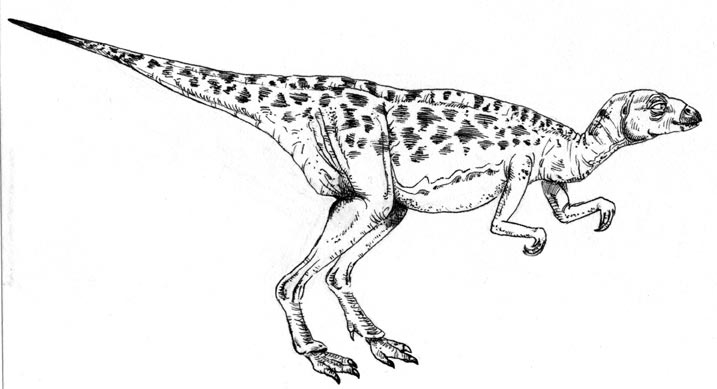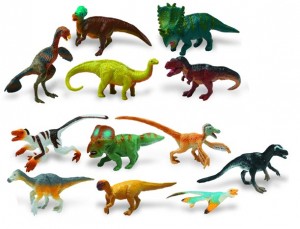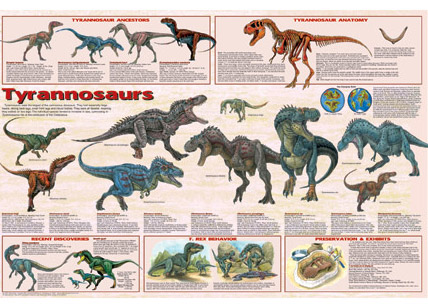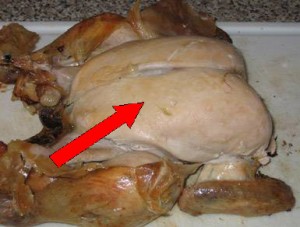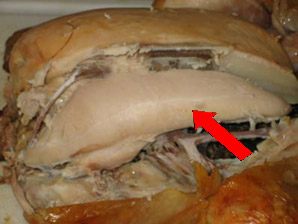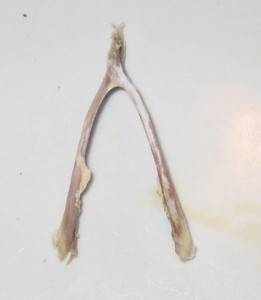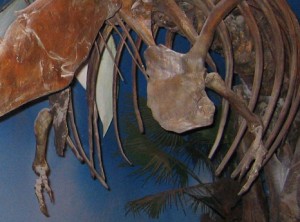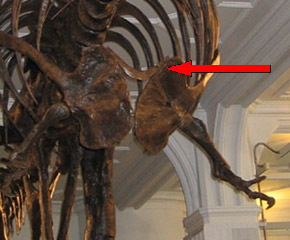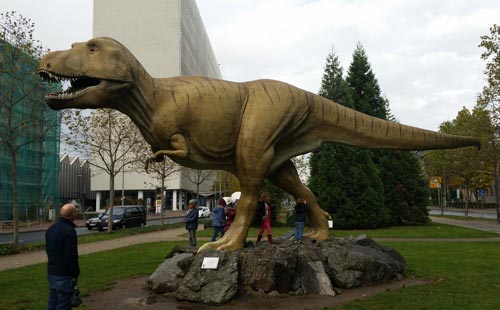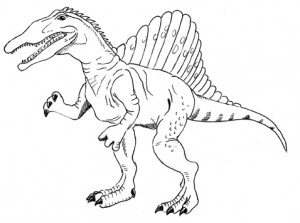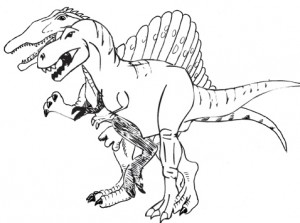Most Popular Web Log Articles of 2007 – Part 1
Most Popular Everything Dinosaur Blog Articles of 2007
As 2007 draws to a close, it is a good time to reflect on the first year of the Everything Dinosaur web log. This is article number 231 in a blog started at the end of May, so our record of publishing something new everyday has just about been kept up. In the fast moving world of palaeontology there is always something happening, this coupled with the growth of Everything Dinosaur has meant that there is always plenty of things to write about.
This is the time of year when lots of lists are drawn up, favourite films of the year, most popular books and so forth, just for a bit of fun we have compiled a list of the top ten Everything Dinosaur blog articles in terms of most views.
The top ten list covers an eclectic range of subjects, from new scientific discoveries, Everything Dinosaur products, theories and new fossil finds. It reflects the diverse nature of our web log. We are sure there is going to be lots and lots to write about in 2008.
Like all good compilations we will start the countdown at ten and this article covers the articles and items that fill the places from tenth down to sixth, with the top five published tomorrow.
The Everything Dinosaur Top Ten Blog Articles (Part 1)
10). Dinosaur Dino-opoly – (Saturday 18th August)
The addition of Dinosaur Dino-opoly to the Everything Dinosaur game range is at number 10, attracting readers throughout the autumn and especially at Christmas. The game, based on the traditional board game monopoly is aimed at players from eight years and up, you have to collect bones and trade them in for museum exhibits as each player strives to build the best dinosaur museum. A fun game to play with the added bonus that young dinosaur fans can learn about prehistoric animals whilst playing.
Dinosaur Dino-opoly Game
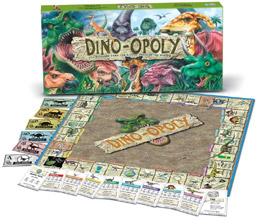
A dinosaur inspired board game.
Click here to visit our website: Everything Dinosaur.
9). Blame the Deccan Traps! – (Saturday 3rd November)
A number of theories have been put forward regarding the causes of the mass extinction event at the end of the Cretaceous. A team of American scientists challenged the asteroid/meteorite theory and proposed that massive volcanic eruptions in India led to the demise of the dinosaurs and about 65% of all life on Earth. New studies of the enormous basaltic lava flows of western and central India – known as the Deccan Traps, indicated that the most violent and devastating eruptions are dated very closely to the mass extinction event.
Volcanic activity on this scale would have thrown out into the atmosphere huge volumes of carbon dioxide and sulphur dioxide, dramatically changing the world’s climate and leading to the collapse of entire ecosystems.
To read the full article: Dinosaur Extinction Asteroid Impact Theory Challenged.
8). Claws! – Giant Sea Scorpion of the Devonian Discovered – (Saturday 24th November)
Markus Poschmann of the Mainz museum, in Germany found a 390 million-year-old fossil claw from what could be the biggest arthropod known to date. The fossil was found in a quarry near the town of Prum in western Germany. Study revealed the fossil to be part of a claw of a sea scorpion species named Jaekelopterus rhenaniae, this species had been described and named from other German finds last century but this new find reveals that this particular sea scorpion was a giant of the Devonian seas, reaching lengths in excess of 2.5 metres.
This animal would have been one of the top predators around at the time, hunting fish, trilobites and anything else it could catch. Taking a dip in the Devonian would have been a very risky business!
To read the article in full: Claws! Giant Sea Scorpion of the Devonian.
7). Dinosaur Raincoats and Dinosaur Pyjamas – (Tuesday 25th September)
The introduction of dinosaur raincoats and pyjamas with a dinosaur pattern into our clothing range proved a popular article amongst readers in the Autumn of 2007.
The pyjamas are made from 100% cotton and have proved to be a big hit with the parents of children aged 3 – 7 years. They are pyjama sets, consisting of a trouser with a colourful dinosaur pattern and a top which has a dinosaur applique motif on the chest.
The caption on the top says “PJ Rex” we did not get too fussy over the scientific accuracy of the theropod featured on the motif, or in the way that the manufacturers have misappropriated a species name by giving it a capital letter, but they are warm, practical and covered in lots and lots of dinosaurs – brilliant!.
Pyjamas from Everything Dinosaur

The dinosaur raincoats were a real find, almost as exciting as finding a fossil on a field trip. These hard-wearing, durable raincoats are made from 100% waterproof polyurethane with a terry cotton lining (78% cotton, 22% polyester). They have a hood to keep the rain off and the coat has a colourful dinosaur pattern on it with lots and lots of dinosaurs (and the odd flying reptile). There are even two front pockets for young palaeontologists to keep their fossils in.
We had a lot of fun deciding which prehistoric animals were represented in the artwork, there is a real mixture with stegosaurs, spinosaurs, lots of other meat-eaters but our favourite is the blue coloured ornithomimid with orange spots – wonderful! After such a wet summer, these raincoats were bound to prove popular!
Dinosaur Raincoats – Introduced in the Autumn
6). Nigersaurus – The Dinosaur the Grazed like a Cow – (Tuesday 24th November)
Stories and articles about unusual dinosaurs are always popular, certainly Nigersaurus was a very unusual dinosaur indeed and just misses out on a top five placing.
Nigersaurus was a long-necked dinosaur, a sauropod. It lived during the Cretaceous, fossil evidence suggests that these type of animals were around from 119 to approximately 99 million years ago (Aptian and Albian faunal stages). It was a member of the rebbachisaur family, a group of sauropods from the southern continents and Europe. Estimates of size vary but it is believed that Nigersaurus grew to lengths of around 10 metres and when compared to more typical diplodocoids its neck was considerably shorter.
The most remarkable feature of the rebbachisaurs, and very evident in Nigersaurus was the extensive battery of sophisticated teeth. Nigersaurus had upwards of 600 teeth in its jaws. These teeth were arranged in rows along the front edges of the jaws, forming effective 30 cm long shears for cropping vegetation. Study of the head and neck vertebrae indicate that the head was held close to the ground and Nigersaurus was probably a low level browser, shearing away at ferns, horsetails and other ground level plants like a cow grazing.
Full article on Nigersaurus: Nigersaurus – the Dinosaur that may have Grazed like a Cow.


